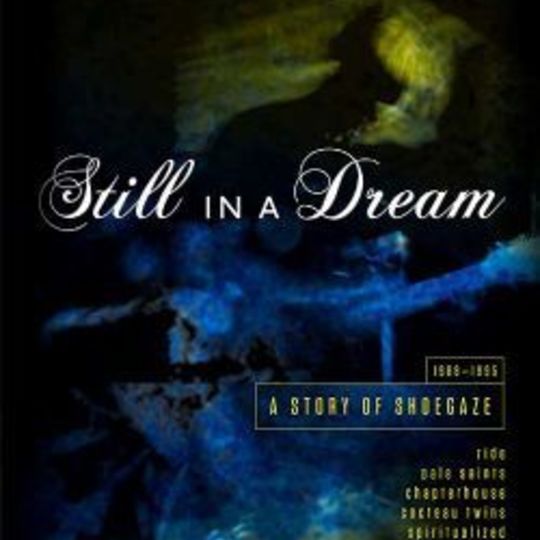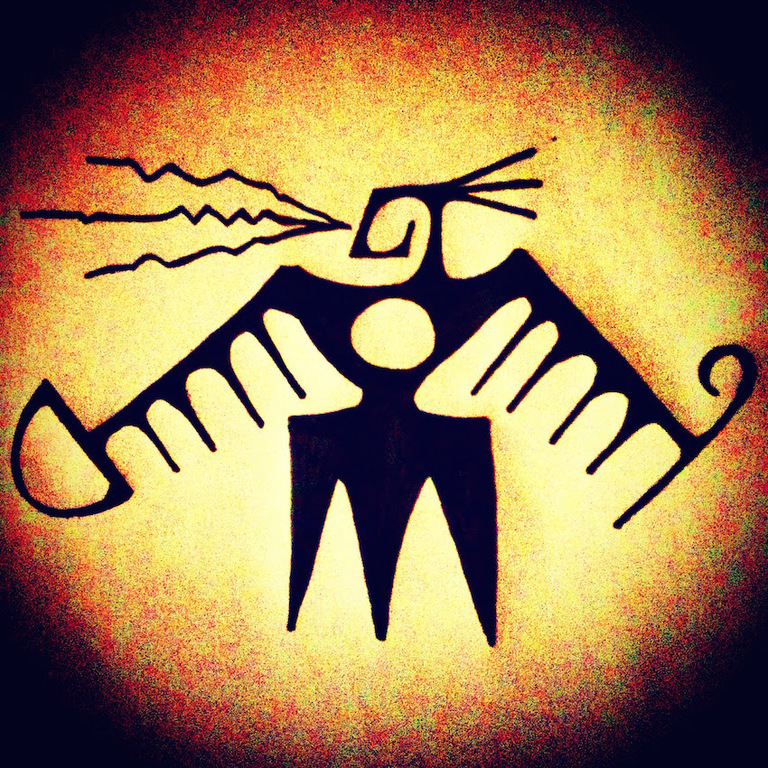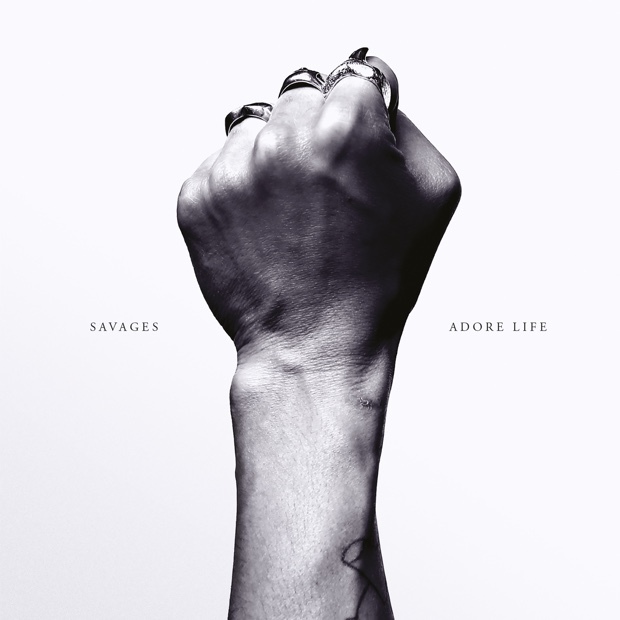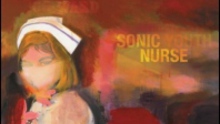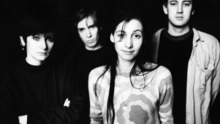Shoegaze. Initially a derogatory term bestowed upon bands that emerged in the early Nineties deemed to be hiding behind floppy fringes whilst staring at their feet. Of course that wasn't the case, as My Bloody Valentine's Debbie Googe pointed out in an interview on this very site three years ago. 'We were staring at our pedals not at our shoes!' she insisted.
Effects pedals. Lots of them. Arguably the definitive weapons of choice for any band aligned with the dirty eight-letter word. And what a glorious wall of sound many of those acts created. Fusing elements of Sixties garage pop and neo-psychedelia with the more experimental elements of post-punk given an ambient makeover made for some of the most original and ultimately influential music of its time. Hell, shoegazing even has its own Wikipedia page now! No longer an insult. Now a respected genre in its own right, and some could argue responsible for the last truly innovative groundbreaking record of recent times. Loveless.
So where did all start? While many commentators cite The Jesus & Mary Chain's Psychocandy as being the first shoegaze record, its origins start two decades beforehand. Bands like The Yardbirds and The Pretty Things were using distortion as an art form in the mid-Sixties, while The Byrds' off kilter melodies where David Crosby's rhythm guitar chimed and weaved a melody of its own beneath the main body of the song also played a part. As did the first incarnation of Pink Floyd, undoubtedly the catalysts for taking songs way beyond the traditional three-minutes structure. Fast forward a decade to the late David Bowie's 'Heroes' and you'll hear Robert Fripp's echo-laden guitar driving through the song's heart. A completely unique sound at the time - remember this was 1977 - and surely something that didn't go amiss with the main protagonists of shoegaze several years later.
Of course there's been a resurgence of interest in the genre these past few years. Not least due to the emergence and subsequent success of numerous bands clearly influenced by its initial phase. People like Sigur Ros, M83 and Mogwai for instance. Coupled with the reformations that have taken place by most of its leading lights. My Bloody Valentine, Slowdive and Ride having all played a succession of sold out shows worldwide to a new wave of critical acclaim, with Lush set to follow suit in a few months time. So it was perhaps inevitable - and welcoming - that following on from last year's excellent 'Beautiful Noise' documentary there'd be an anthology boxset waiting to be unleashed somewhere soon.
Still In A Dream: A Story Of Shoegaze 1988-1995 collects a mammoth 87 artists across five CDs in one glorious compilation, housed in a book-style box set that also includes a 12,000-word essay by esteemed music writer Neil Taylor, rare memorabilia and photographs from the era, biographies of each participating band and an American perspective of the genre by Springhouse drummer and editor of The Big Takeover fanzine Jack Rabid. It represents the most definitive document yet of a scene that was much-maligned at the time, but has since gone on to be one of the most pivotal and influential in the development of modern music.
Minor gripes aside first. My Bloody Valentine are conspicuous by their absence. Undoubtedly the leading exponents of shoegaze (a tag they've never been comfortable with if the truth be told) and responsible for two of its most influential records: Isn't Anything (a track off which Still In A Dream... finds itself named after) and the aforementioned Loveless. Likewise Sonic Youth and The Brian Jonestown Massacre – while neither band would ever claim to be shoegaze in its most linear form, their presence and influence both then and now can never be underestimated. And for a collection that focuses on the years between 1988 and 1995, one would've hoped its creators would surely have considered their inclusion at the very least?
Nevertheless, what Still In A Dream... does amass is a smorgasbord of aural delights from a plethora of artists both instantly recognisable and some not so familiar. Disc one opens with The Jesus & Mary Chain's 'Rollercoaster' which is perhaps as good a place to start as any. While Cocteau Twins 'Cherry-Coloured Funk' and The House Of Love's 'Christine' are devoured along the way for old time's sake, it's the lesser feted likes of Ultra Vivid Scene's 'The Mercy Seat', Kitchens Of Distinction's 'The 3rd Time We Opened The Capsule' and Pale Saints 'Sight Of You' that steal the show here. Salisbury's Jane From Occupied Europe deserve a mention too, their excellent debut 'Oceans Run Dry' meriting an inclusion here, if only as a reminder of what a spectacularly underrated, if short lived, band they were.
Disc two kickstarts with Ride's 'Drive Blind' leading into 'De-Luxe' by Lush. The Boo Radleys' early single 'Kaleidoscope' - all feedback, reverb and distortion - is as far away from their Wake Up! Britpop era as is likely to get, while Slowdive's 'Slowdive off their debut EP is followed by 'Liar' from The Charlottes which was said band's last recording to feature future Slowdive drummer Simon Scott. Elsewhere, Netherlands four-piece The Nightblooms explosive 'Crystal Eyes' remains one of the great lost singles of that era while Bark Psychosis's incredible debut 'All Different Things' undoubtedly paved the way for post-rock.
By disc three, there's a more diverse and experimental nature to proceedings. Curve's 'Ten Little Girls' - possibly the only predominantly shoegaze record to feature a guest rapper (JC-001) - fuses hip hop beats with layers of distorted guitar to maximum effect. Th' Faith Healers 'Gorgeous Blue Flower In My Garden' provides a solitary axis between the scene's incumbent noise peddlers and the impending US grunge movement that was building momentum at the time, while Bang Bang Machine's 'Geek Love' takes an even more aspirational voyage towards the dancefloor across its nine minutes of beat-infused alt-pop. Irish quartet Moonshake sound years ahead of their time on the lavish 'Gravity' while post-C86 noiseniks Black Tambourine's 'By Tomorrow' and Revolver's insatiable 'Heaven Sent An Angel' are among the many highlights contained within.
Discs four and five focus on both the obscure and early Stateside take on shoegaze respectively. Early Flaming Lips recording 'Talkin' 'Bout The Smiling Deathporn Immortality Blues (Everyone Wants To Live Forever)' sits comfortably alongside Newcastle jangle poppers The Sunflowers' 'Closer', while Sonic Boom and Spectrum's poignant take on Daniel Johnston's 'True Love Will Find You In the End' finds solace in such distinguished company as Drop Nineteens 'Winona' and Adorable's 'Sunshine Smile'. Mercury Rev make an appearance too, 1993's 'Bronx Cheer' one of their last recordings to feature original vocalist David Baker. Elsewhere, Bristol's Secret Shine ('Loveblind'), Sydney's Swirl ('The Last Unicorn') and Irish outfit Rollerskate Skinny ('Miss Leader') all offer diverse suggestions as to where the genre was heading next. Perhaps the most striking chord for its future is documented within Seefeel**'s gorgeously crafted 'Plainsong', which paved the way for electronic diversions the likes of M83's Anthony Gonzalez and Ulrich Schnauss have cultivated and made their own.
Overall, Still In A Dream: A Story Of Shoegaze 1988-1995 is an essential purchase for anyone with an interest in the genre. And while the omission of certain acts make it just fall short of being definitive, there's more than enough sonic gold here to compensate.
-
9Dom Gourlay's Score

